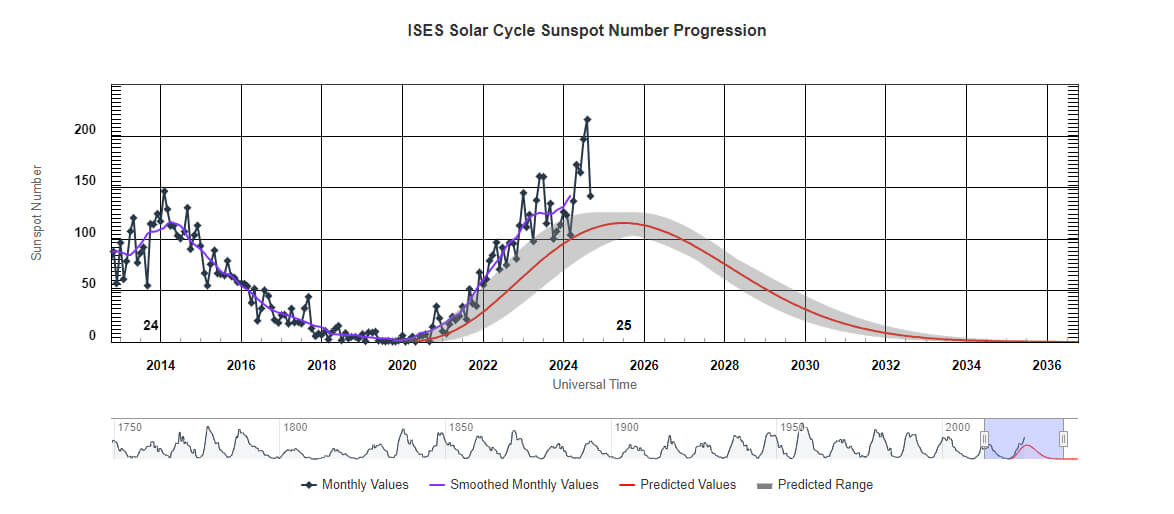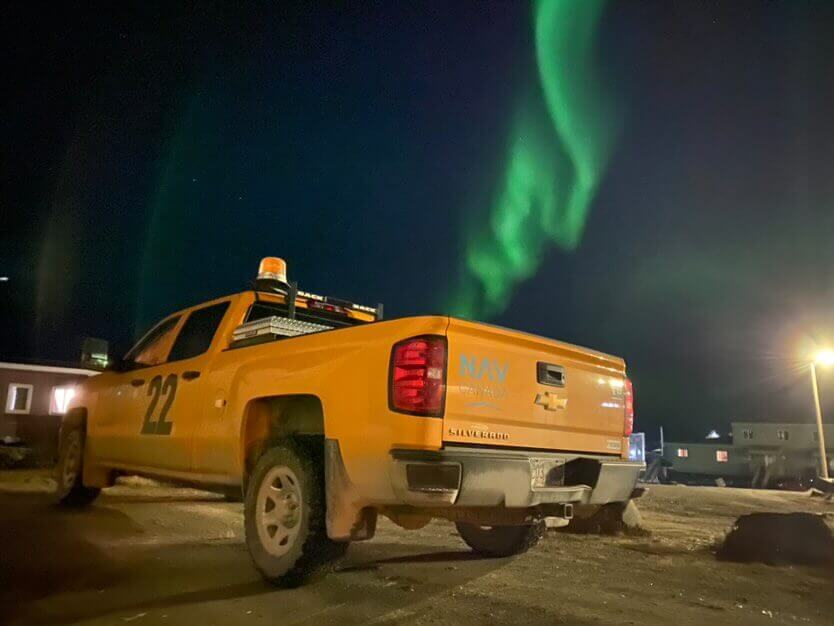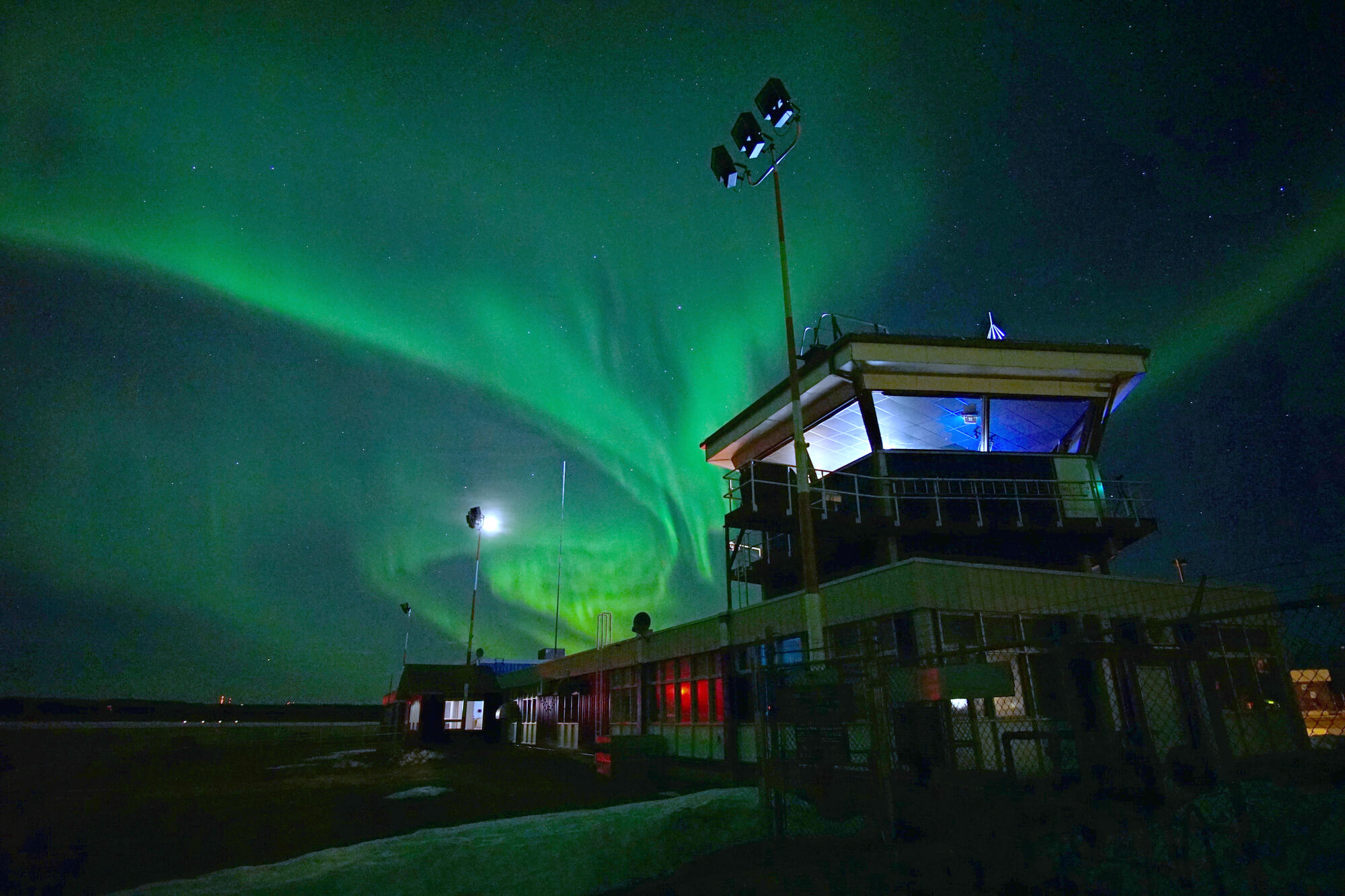







October 7, 2024
In recent years, an increase in geomagnetic storms has produced stunning light shows in the skies, captivating people around the world. “They were awe-inspiring,” says Reed Oram, a Flight Service Specialist based in Norman Wells, Northwest Territories, who witnessed the northern lights in September 2024. “It was like a symphony of colours. They were a vibrant green gradient that danced in the sky both quickly and slowly at various times throughout the night.”

Photo taken by Nicky Lynn Richards in Norman Wells, Northwest Territories, in September 2024.
Caused by a flurry of coronal mass ejections (CME) from the Sun, the aurora borealis is more than just a visual spectacle—it’s a reminder of the powerful effects of space weather, which can impact life on Earth, including the technology and systems used by aviation industry professionals.
“We’re approaching a solar peak,” explains Dr. Cassandra Marion, Science Advisor to the Canada Aviation and Space Museum. “The Sun’s magnetic field goes through solar cycles that last approximately 11 years. During this time, the Sun goes from being relatively calm to very active and then back to calm again. When it’s more active, we see additional sunspots, solar flares and solar storms, which can send out bursts of energy and charged particles into space. The current solar cycle is expected to reach its peak during the summer of 2025.”

Source: Space Weather Prediction Center
The Earth’s magnetic field protects us from most of the Sun’s activity, but during periods of high solar activity, geomagnetic storms occur. These storms are responsible for the increased range and intensity of the northern lights or aurora borealis, a beautiful display of colours in the sky caused by charged particles from the Sun interacting with Earth’s atmosphere.
While this phenomenon is captivating to watch, geomagnetic storms can have impacts on technologies used in aviation. For instance, disruptions to some communication and navigation systems can occur during intense solar storms.
.jpeg)
With the use of new technologies and sensors on the ground, in space, and on aircraft, pilots have been able to perform increasingly complex procedures, helping them become more efficient and reducing flight times. During rather intense solar storms, Global Navigation Satellite System (GNSS) signals that many aircraft use for instrument approach procedures can occasionally be affected. When this happens, pilots may need to downgrade to equally safe, but less efficient, instrument approach procedures using alternative navigation systems.

Photo taken by Melissa Myers, NAV CANADA Flight Service Specialist, in Rankin Inlet, Nunavut.
Aviation space weather advisories are provided by specialized global space weather centres that use detailed analysis of the Sun’s activity, monitored by near-real-time observations from Sun-observing tools both on the ground and in orbit to determine if space weather effects might affect aviation significantly enough to warrant the issuance of an advisory.
“The space weather centres try to predict variations in solar wind and when a flare or CME may occur,” says Dr. Marion. “Radiation from solar flares can travel at the speed of light and impact the Earth in a matter of minutes. CMEs, however, may take 12-72 hours to reach Earth, so we tend to be more prepared for those events. We have made great progress, but there is still much to learn.”
Satellites such as the Solar Dynamics Observatory and the Advanced Composition Explorer (ACE) provide critical data for these forecasts, helping predict when aviation systems might be affected. This is particularly important for GNSS systems that aircraft use for precise positioning and navigation.

Photo by Kyle Baigent, NAV CANADA Flight Service Specialist, at the Fort Nelson Flight Service Station.
“With several space weather centres monitoring the Sun’s activity around the globe and issuing advisories when moderate to severe activity is either observed or expected, the aviation industry can take measures to mitigate the effects of space weather,” says Eric Dupuis, NAV CANADA’s Manager of Aviation Weather Services “For instance, pilots can check space weather advisory bulletins issued under FNXX01, FNXX02 and FNXX03 on NAV CANADA’s Collaborative Flight Planning Services website and in-flight updates are also provided through the company’s Flight Information Centres (FIC), ensuring that flight crews are always informed of potential impacts to their planned flight associated with the Sun’s activity level.”
In October 2024, representatives from NASA, the National Oceanic and Atmospheric Administration, and the Solar Cycle Prediction Panel announced the Sun reached its solar maximum period, making space weather advisories increasingly important for aviation industry professionals. To learn more about upcoming solar events and their potential impact on aviation, visit Space Weather Canada or follow NAV CANADA’s space weather advisories.